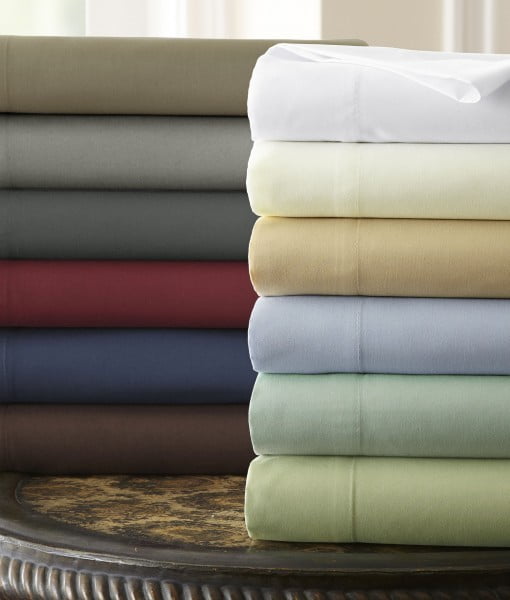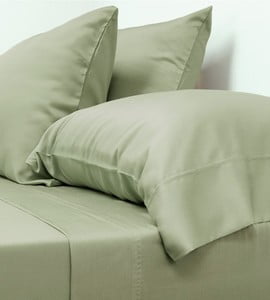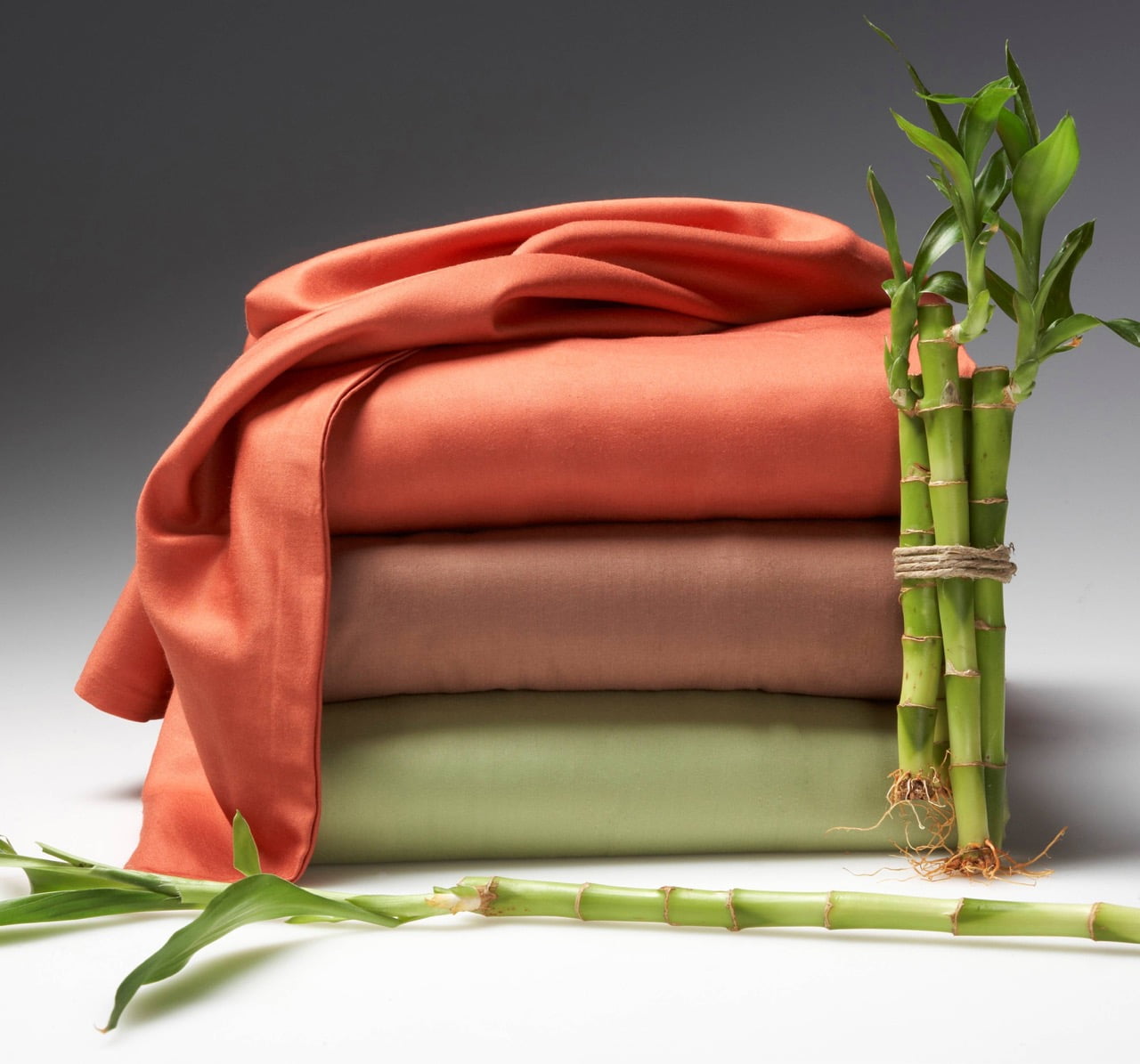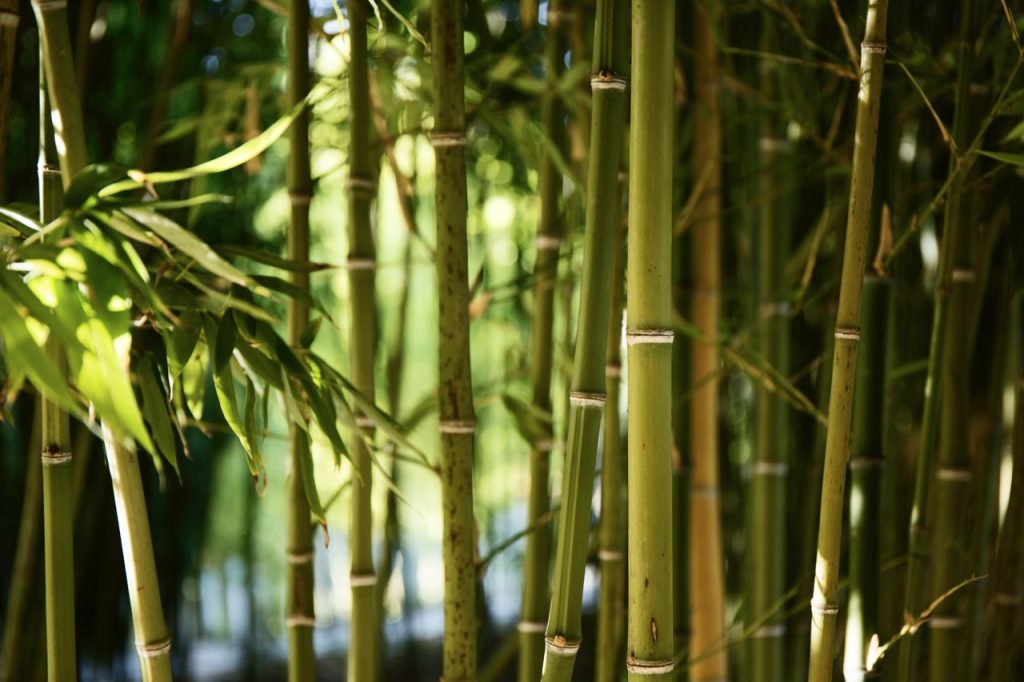If you have trouble sleeping through the night, have you taken a long hard look at your sheets? Increasingly, bamboo sheets are emerging as a brilliant option to ensure a sound night’s sleep.
Bamboo sheets have become a buzzword in the world of bedding lately, and for good reason. These sheets have a lot to offer, including breathability, softness, and sustainability, making them a popular choice for those seeking a better night’s sleep.
What Are Bamboo Sheets?
So what are bamboo sheets? These miracles of nature are being promoted as softer than Egyptian cotton, way more breathable and able to regulate body temperature thanks to their moisture wicking properties. Bamboo even comes with anti-microbial properties, which is great for those of us suffering from allergies, how good is that?
Bamboo fiber sheets are reputed to feel silkier and softer than conventional cotton sheets. However, bamboo sheets are still new enough for many of us to be a little unsure about what we should be looking for when buying our own first set of quality bamboo sheets.
How can you be sure you are buying genuine bamboo sheets and that they are worth it? Just how much of that good night’s sleep we take for granted is due to choosing the right bed sheets?
Types of Bamboo Sheets

1. 100% Bamboo Rayon
Most widely available bamboo sheets are made of bamboo rayon. If you opt for bamboo rayon sheets, look for bamboo rayon processed using chlorine or zinc sulphate free treatments.
2. 100% Bamboo Lyocell
This has to be one of the 21st century’s more sustainable materials. The lyocell process involves dissolving raw bamboo in a non-toxic solution. Lyocell has the benefit of being both softer and stronger than rayon.
3. Bamboo-Cotton Blend
Common blends run the gamut between 60 percent bamboo rayon and 40 percent cotton or 70 percent bamboo rayon and 30 percent cotton. Whichever blend you ultimately opt for the resulting fabric is slightly stronger than a 100 percent pure bamboo option.
4. Bamboo Linen
Bamboo linen makes use of a similar manufacturing process used in producing linen fabric from hemp or flax. However, bamboo linen is not particularly soft and like all linen products wrinkles easily, hence bamboo linen bedding should be ironed after washing.
Weave
The weave of a fabric determines how your sheets look and feel. While both bamboo sateen and bamboo twill are made from 100 percent bamboo fiber, both have distinctive differences in texture.

1. Sateen
Sateen employs a three-yarn-over and one-yarn-under weave. This weave results in smooth, luminous sheets with higher thread counts and thick, closely woven texture. The larger thread surface is what gives sateen its noticeable luminescent shimmer and soft-as-silk feel. However, sateen’s characteristic yarn conveys a more delicate fabric finish than its twill weave equivalent.
Pros: Twice as softer as twill weave. It is similar in softness to silk.
Cons: requires more care to maintain. Sateen fabrics take longer to produce than twill and are subsequently more expensive.
2. Twill
Twill, has a signature diagonal rib or twill line. This weave resembles the weave found in jeans. It is a short, tight and very fine weave. Bamboo twill is not as soft as bamboo sateen but is noticeably softer than a cotton or bamboo cotton blend sheets.
Pros: Sturdier than its equivalent sateen weave.
Cons: Twill is more prone to shrinkage than sateen sheets because of its looser weave.
Benefits of Bamboo Sheets
Bamboo sheets are not just environmentally friendly, but they also provide numerous benefits that make them a popular choice for many consumers. Some of the most notable advantages of bamboo sheets include:
Temperature Regulation: One of the exceptional properties of bamboo sheets is their innate temperature-regulating capability, providing warmth during cold winter months and coolness in the hot summer season. The breathability and moisture-wicking qualities of bamboo fibers further enhance their appeal, making them a highly sought-after choice for individuals experiencing night sweats caused by overheating.
This unique mechanism ensures that heat and moisture are drawn away from the body, facilitating the natural temperature regulation system of sweating. Bamboo sheets are, therefore, an excellent choice for hot sleepers. They help prevent the accumulation of moisture and heat in the bedding, which can disrupt the quality of sleep.
Hypoallergenic: Bamboo bedding is a highly desirable option for those with allergies or sensitive skin, owing to its unique set of properties. Bamboo fibers possess natural hypoallergenic qualities that make them an ideal choice for individuals who are prone to skin irritation and allergies. This is due to the fact that bamboo fibers are inherently resistant to bacteria and allergens, which greatly reduces the risk of skin irritation and allergies.
The warm, humid environment created by dust mites can trigger indoor allergy symptoms such as sneezing, runny nose, and nasal congestion. Thankfully, bamboo bedding’s ability to regulate temperature and wick away moisture keeps the sleeper cool and dry, effectively deterring the growth of dust mites and reducing the risk of indoor allergies. For optimal results, it is recommended to pair bamboo bedding with a hypoallergenic mattress.
Bamboo sheets are also highly suitable for individuals with sensitive skin or eczema. The breathability and moisture-wicking properties of bamboo fibers prevent the bed from becoming a breeding ground for bacteria and mites, ensuring that the sleeper’s skin remains irritation-free. Bamboo fibers are highly absorbent and possess antibacterial properties, which eliminate bad bacteria and prevent the risk of infection or skin irritation.
Furthermore, bamboo bed sheets are hypoallergenic, providing relief to individuals suffering from allergies or asthma symptoms caused by dust mites. The anti-microbial properties of bamboo fibers prevent dust mites from growing, making it an ideal bedding option for allergy sufferers.

Softness and Comfort: Bamboo bedding exudes an exceptional softness that goes beyond even the finest cotton sheets, with a luxurious, silky texture. Moreover, bamboo-based textiles offer a satin-smooth feel that is tender and gentle on the skin. Bamboo fibers are not only known for their natural softness and luxurious feel but also for their ability to reduce friction, making them an excellent choice for pillowcases, especially for people with textured or frizzy hair.
Bamboo bedding offers a remarkable draping quality, providing a feel akin to silk or satin, but with greater durability and affordability. This makes bamboo sheets an exceptional choice for those seeking both indulgence and practicality. Individuals who desire luxurious softness and comfort without exceeding their budget can confidently choose bamboo bedding.
Durability: Bamboo bedding is an excellent investment for those seeking long-lasting bedding options, boasting remarkable durability and strength. Its naturally long and thin fibers, coupled with their smooth surface, prevent pilling, fraying, and tearing, allowing them to endure daily wear and tear and maintain their shape and strength over time.
Premium bamboo fabrics can last for over 10 years with proper care, surpassing bed sheets made from short fibers that rapidly pull, tear, and shrink. Bamboo bedding is also highly resistant to staining and fading due to its unabsorbent nature, ensuring the sheets remain in pristine condition for years to come.
Depending on the weave, the sheets can even become softer with use. With appropriate washing and drying techniques, bamboo sheets offer a comfortable and durable sleeping experience for more than a decade.
Eco-friendliness: Bamboo is an impressive plant with exceptional versatility and strength, enabling it to have a wide range of uses. It has the remarkable ability to grow up to four feet in a day and absorb five times more carbon dioxide than most other trees, in addition to producing about 35% more oxygen, making it an eco-friendly choice for various applications.

Moreover, bamboo is highly regenerative and self-sustaining, meaning it does not need pesticides or herbicides to grow well, unlike cotton. This makes it a sustainable option that reduces the number of chemicals released into the environment and helps preserve natural resources. Farmers can cultivate bamboo entirely organically due to its innate antibacterial and antifungal properties, which means it can resist bugs and bacteria that can harm most plants.
Technically, bamboo is a grass that regenerates quickly after harvesting and can be harvested for its fiber content without killing the plant. Bamboo bed sheets are made from bamboo fiber, which is sustainable and renews itself yearly.
Therefore, bamboo bedding is a more sustainable option than traditional cotton or synthetic bedding. Bamboo is an incredibly fast-growing plant that can reach maturity in as little as three to five years, making it one of the fastest-growing plants globally. This fast growth rate makes it possible to produce a significant amount of bamboo in a short time, thereby reducing the overall environmental impact of the production process.
To produce bamboo bedding, traditional bamboo harvesting is the first step. Whether you are looking for an eco-friendly option or want to improve your sleep quality, bamboo bedding is undoubtedly worth considering.
Drawback of Bamboo Sheets
While bamboo sheets have become a popular bedding choice for their eco-friendly and sustainable properties, they also come with some drawbacks that are worth considering. These drawbacks include:
Care: Bamboo sheets need specific care instructions, including washing in cool water and avoiding the use of fabric softeners and bleach. These sheets require gentle handling to prevent damage to the delicate fibers. However, with proper care, bamboo sheets can maintain their softness and durability for an extended period.
Availability: While bamboo sheets are becoming increasingly popular, they may not be as widely available as traditional cotton sheets, making it challenging to find them in physical stores. However, online retailers offer a more extensive range of bamboo sheet options, including different sizes, colors, and thread counts.
Limited Color Options: Bamboo sheets may have a more limited color selection than cotton or linen sheets, as the natural color of bamboo fibers is a light beige or tan. However, manufacturers are beginning to dye bamboo fibers to produce a broader range of colors, including pastels and deeper shades.
Wrinkles: Bamboo sheets may wrinkle more easily than other materials, which can be a concern for some people who prefer a smooth and crisp look. However, the wrinkles are a natural feature of the fabric and do not necessarily indicate poor quality. Bamboo sheets with higher thread counts or weaves may have a smoother appearance and be less prone to wrinkles.
Tips For Choosing The Right Bamboo Sheets For You
Here are three simple tips to help choose bamboo sheets that suit you:
- Check the label to confirm you are buying either bamboo rayon or bamboo lyocell
- If your priority is the softness of your sheets, go for bamboo sateen. It is feather soft and perfect for sleepers who have sensitive skin
- If you are concerned with durability, bamboo twill is an excellent choice
Bamboo sheets are increasing on our radar as their popularity has risen recently, and for good reason. These sleep-promoting beauties are sustainable, softer than cotton and linen, moisture absorbing and naturally antimicrobial.
They also help keep you cool in summer and warm in winter. So, for anyone reading who is plagued by night sweats or gets overheated and who loves the luxurious feel of great sheets, bamboo sheets could be for you. That sounds like a winner in our book!
We believe a good night’s sleep should be available to all. Share your comments or your experiences with bamboo sheets and help more of us enjoy a restorative nights sleep.
Sources
https://www.guinnessworldrecords.com/world-records/fastest-growing-plant/
https://www.sciencedirect.com/science/article/pii/S1665642317300391







